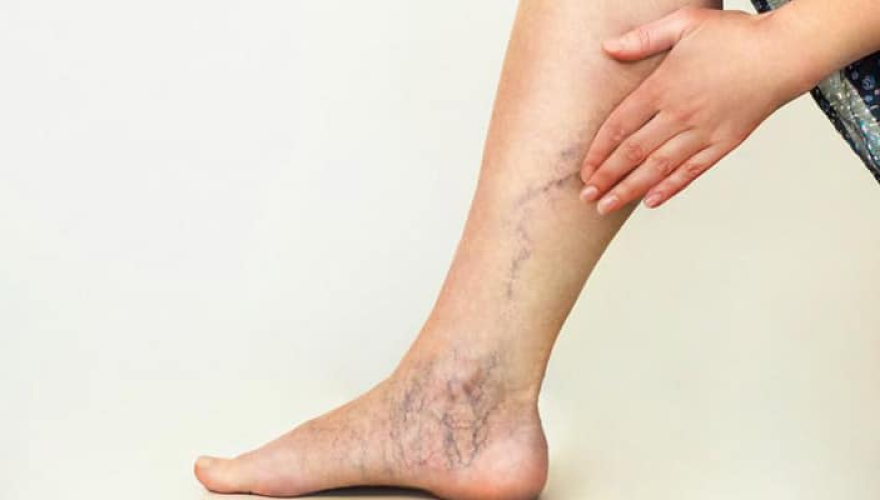What is the cause of varicose veins?
Dysfunction of pigeon nest valves causes varicose veins. These valves are located along the veins and prevent the backflow of blood. With the valves not functioning properly, the blood flow goes back and collects in the vein. Therefore, the vessel is enlarged and swollen and disease occurs. The following things make a person prone to the disease: – Family history – Obesity and overweight – Gender: this disease is more common in women – Age: the age range of 30 to 35 is the most likely to be affected – Having a history of cardiovascular diseases – Type of job and daily activity: people who constantly stand or work in a sitting position all day are more susceptible to the disease – pregnancy: during pregnancy due to the production of more blood for the growth of the fetus, an increase in blood volume can cause this disease in different places of the body. – Trauma or surgery.
Types of varicose veins:
Varicose veins may be severe, moderate or mild. In a mild case, the vessels are slightly swollen and their complexity is evident from the surface of the skin. In the medium type, the vessels become large and bruised, and if not treated, it can be dangerous for the patient. Laser and sclerotherapy are usually used to treat it. The severe type creates an unsightly appearance and can cause skin discoloration, sores, or severe swelling of the veins, and it is necessary to treat it quickly. The types of this disease are categorized as follows: – Varicose veins of the leg: different parts of the leg, such as the back of the leg and thigh, where this disease is more common than other parts of the body. Because the foot is a part of the body that is subjected to more pressure during the day by standing, walking and vigorous activity or sitting for a long time. Varicose veins appear painful and swollen and are more likely to occur in pregnant women and the elderly. There are two common models in the foot. One is the great saphenous vein, which is the largest vein in the body and stretches from the ankle to the groin and can cause varicose veins on the back of the thigh and the back of the leg. The other is small saphenous vein varices that involve the back of the wrist and knee. – Varicose veins in pregnancy: In pregnant women, varicose veins may develop in the abdominal area, and the veins on the abdomen appear swollen and purple or blue in color. It can also occur in the pelvis because the pelvis is under a lot of pressure both during pregnancy and childbirth. In addition, during pregnancy and childbirth, uterine and vaginal varices may occur and are very common because these areas are subjected to a lot of pressure both during pregnancy and during childbirth, especially natural childbirth. Of course, it is very difficult to diagnose the disease in these areas. During pregnancy, due to hormonal changes, the hormone progesterone weakens the vessel wall and increases the risk of disease. – Varicose veins of the testicles: This disease, which is also called varicocele, is very common, and in which the veins of the testicles are swollen and enlarged, and their appearance is just like varicose veins. This disease can be treated easily, but if left untreated, it causes hormonal disorders and inability to produce sperm. – Esophageal varices: Esophageal type is more common in cirrhosis of the liver, where the blood supply to the liver is disturbed due to a blood clot or liver tissue wound. As a result of this type of disease, rupture or leakage of vessels may occur and bleeding is dangerous. – Varicose veins of the face: in this disease, swollen and spider-shaped vessels are formed on the cheeks, temples, and the side of the nose. This disease mostly occurs due to pregnancy, excessive alcohol consumption, trauma and injury to the face, sunlight, and weather changes. to give Telangiectasia is a vascular disease that can cause varicose veins. – Varicose veins of the hand: As the skin of the hand grows thinner and the subcutaneous fat decreases, the vessels swell, especially in high temperatures and hot days or in conditions of more physical activity. Varicose veins of the hand occur mostly in the wrist area. – Stomach varicose veins: this type of varicose veins is dangerous and the veins that connect from the throat to the stomach become swollen. This disease is more likely if a person has liver cirrhosis.
Disease symptoms:
A patient with varicose veins may experience the following symptoms: – Blue and purple veins on the surface of the skin – Swelling of the veins – Feeling of pain or heaviness in the legs – Change in skin color – Stretching of the leg muscles – Itching in the varicose area – Leg cramps during Standing – great pain after sitting for a long time.
In most cases, the patient does not pay much attention to these symptoms, but it is necessary to know that the disease becomes severe over time and causes various problems. Therefore, even if small vessels are involved, it is better to consult a doctor so that, if necessary, the progression of the disease can be prevented by medicine or other treatments. It is very important to see a doctor in different types of diseases, especially during pregnancy.



